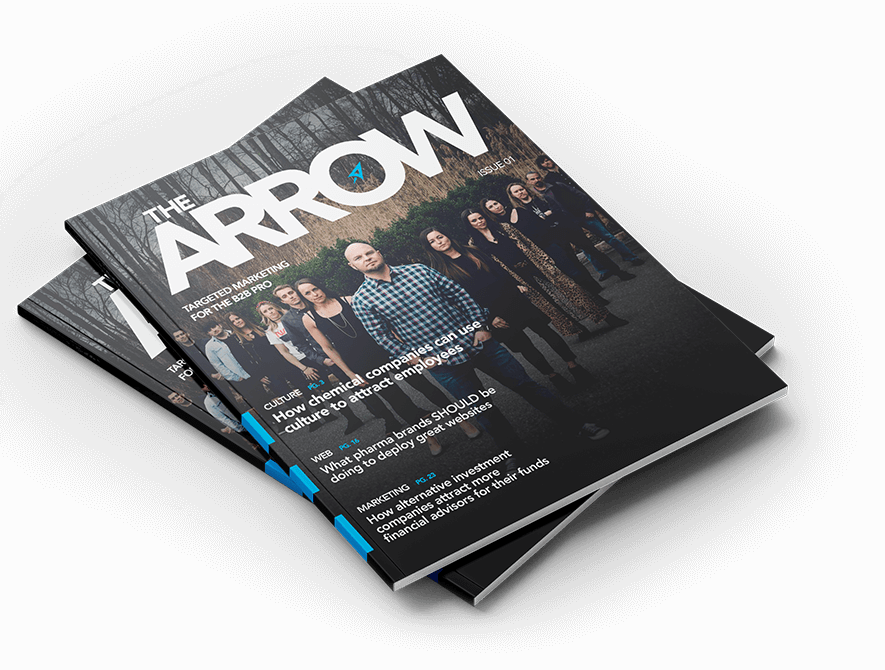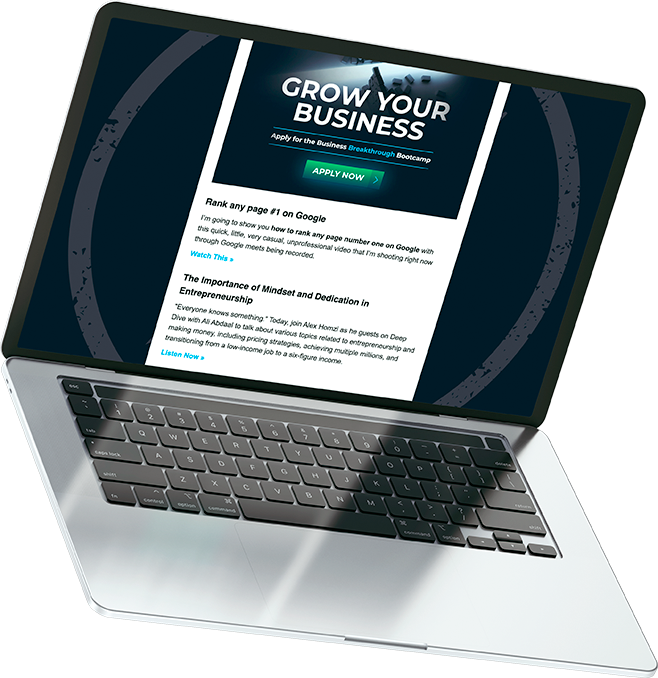Maximize Email Marketing Data for Optimal Results
Chris Mulvaney is the CEO of CMDS. I make things... I’m the creative entrepreneur with passion for (re)making brands and inventing solutions to problems no one knows exist.
Are your email campaigns falling flat? Not getting the desired response? First-party data cannot be overlooked. Here’s how to make the most out of the data you get from email marketing efforts.
In the ever-evolving landscape of digital marketing, email remains a tried-and-true and indispensable tool for reaching your audience. It’s actually one of the most cost-effective ways to connect with targeted audiences, yet, it’s often overlooked or ineffectively used. Sending out swanky emails simply isn’t enough though; understanding the intricacies of email marketing analytics is the key to unlocking its full potential for your business. Whether you’re deciphering open rates, optimizing click-through rates (CTR), or tracking links, every piece of data holds a valuable clue to refining your strategy.
Let’s dig into the data behind email marketing to help you drive better results for your next campaign.
Look Inside Open Rates: How Many Times Has Someone Opened Your Email?
Understanding open rates extends beyond merely gathering email marketing data (and then doing nothing with it); it’s a valuable tool for identifying your true audience and helping you tailor marketing efforts effectively.
So, why does it matter how many times your email is opened? Email open rates can help identify your true audience in several ways:
- Engagement: Higher open rates indicate a more engaged audience, that’s clear. Subscribers who consistently open your emails are likely interested in your content or products, making them a significant part of your ‘fan base.’
- Segmentation: Email segmentation is designed to provide ultra-relevant content to your audience. Those who frequently open your emails can be grouped separately, allowing you to send specific offers to this more responsive segment, increasing the chances of conversion and creating stronger customer relationships.
- Personalized Content: Do you really know what kind of content your audience prefers? Chances are, different segments are interested in different things. Understanding these diverse preferences is crucial for tailoring your content to resonate effectively with each subgroup. Your true audience, for example, may lean towards educational-based newsletters over promotional emails, showing a preference for industry updates and informative content. On the other hand, prospects who are looking for a reason to make their first purchase may be more interested in promotional emails.
- A/B Testing: Determining the best marketing copy to use can be tricky. That’s where A/B testing comes in. Experiment with different subject lines to pinpoint what resonates with your true audience, leading to improved open rates over time. Does your audience prefer when you use their name in the subject line? Do they like emojis? Questions? Experiment, track, and optimize.
- Timing Insights: Digging even deeper, email open times can also provide insights. If a significant portion of your audience opens emails at a specific time of day, consider adjusting your send times to reach your true audience when they are most active. While there’s no one-size-fits-all answer, many studies suggest that sending newsletters in the morning on weekdays (Tuesday, Wednesday, or Thursday) tends to be most effective. In general, avoid weekends and be mindful of holidays that might affect your audience’s availability.
- List Cleaning: Out with the bad! Did you know that if you continue engaging with unengaged subscribers (i.e.: they always delete your emails without opening them), it not only hurts your email deliverability but also negatively impacts your reputation making it more likely that your emails will end up in other recipients’ spam folders (even your engaged subscribers!). Removing inactive subscribers and using strategic segmentation can improve your overall open rates, ensuring your email is landing in the inboxes of your true, engaged audience.
By consistently tracking how often recipients open your emails, you can gain valuable insights that fuel informed decisions and refinement of your email marketing strategies.
So, what is a good open rate? It varies depending on several factors including your industry, the quality of your email list, and the type of content you’re sending (promotions vs. informational newsletters), but can range between 15-25%. Ultimately, what constitutes a “good” open rate for your specific email marketing efforts is relative to your goals and past performance.
Click Rates: Pushing Buttons and Placing Orders
With that being said, what piqued their interest once they opened your email? Looking at the details of what your audience clicked, particularly the URLs they engaged with, helps you understand what certain users are interested in. But it doesn’t end there. Understanding the “why” behind their clicks is a golden ticket for your sales team. This gives them a solid reason to reach out to those users as “warm leads,” sparking conversations that revolve around the very interests that led them to click in the first place.
What’s a good click rate? Similar to the open rate, this stat will also vary depending on many factors, but generally, a click-through rate (CTR) of 2-4% is often considered average, while a CTR above 4% is typically considered above average or good.
Boosting click rates requires a strategic approach. Here are four best practices to help you increase engagement and drive more action from your subscribers.
- Clear and Compelling Call to Action (CTA): A CTA makes it clear to your recipients what the next logical action step is to engage further. Find Out More. Place an Order. Sign Up Now. By using compelling language and contrasting colors, it makes it easy for recipients to understand what action you want them to take.
- Mobile Optimization: Every time you push “send,” expect more than half of your recipients to open it on a mobile device. Can you guess what they do with an email that isn’t optimized for mobile? They delete it. Ensure that your emails are mobile-responsive. With a growing number of users accessing emails on mobile devices, your links and content must be easily clickable and visually appealing on smaller screens.
- A/B Testing: Similarly to subject lines for open rates, experiment with different elements of your emails, such as special effects, CTA placement, button design, and link text. Conduct A/B tests regularly to determine which variations yield higher click rates, and apply these insights to future campaigns.
- Relevant and Valuable Content: Tailor your email content to match the recipient’s interests and needs. Provide value and relevance, so subscribers are motivated to click through to learn more or take action. This is another great reason to use segmentation to send targeted content based on subscriber preferences.
Leveraging Links and Tracking Engagement with Google Analytics
Not only is the first-party data within your email platform important, but if links are properly placed within your email, you can gain even deeper insight into engagement. Cross-check with Google Analytics and that comprehensive data goes to a whole new level, including:
- Website Visits: Want to know how effective your emails are in generating website traffic? Track your links to see how many users visited your website, providing a clear picture of the traffic driven by your email campaign.
- Engagement: Google Analytics offers metrics like engagement rate, average engagement time, and pages visited, and actions taken on the site. By tracking link clicks within your email, you can assess how engaged recipients are with your website content.
- Users’ Journey: Once they reach your website, you have the opportunity to identify the specific pages viewers clicked on next. This valuable data helps you understand which content or services are of interest to your email subscribers, identify drop-off points, and optimize future content for higher conversions.
- Conversion: Google Analytics allows you to set up conversion goals, such as completing a purchase, filling out a form, or signing up for a consultation. By cross-referencing link clicks with conversions, you can measure the success of your email campaigns in terms of specific actions taken on your website.
Does Your Email Get the Message Across?
Did you know? A recent survey showed that email achieves a median ROI of 122%, which is more than 4x more than any other marketing channel, including social media (28%), direct mail (27%), and paid search (25%). But remember, the digital landscape is always evolving. Staying ahead of the curve by utilizing your email stats is the key to achieving sustained success with your email marketing efforts.
At CMDS, we know the power of branded newsletters. When executed strategically, email marketing yields a higher ROI than any other marketing channel. In fact, for every $1 invested in email marketing, you can expect a return of $38! This is exactly why our in-house marketing team at CMDS ensures emails are seamlessly aligned with your business goals while keeping user needs in mind. Through email campaign strategy, template design, content creation, scheduling, and data interpretation, we help brands maintain connections and enhance customer retention.






